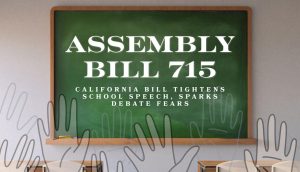Benefit awareness for students filing taxes before deadline
April 11, 2012
Whether students file taxes independently or in consultation with a tax specialist, it is important to be aware of the tax benefits before April 17 – the tax filing deadline.
A tax credit counts toward a student’s income tax amount, and it may be refundable or non-refundable. Refundable means the excess credit may be refunded to the filer. Non-refundable means the credit will only reduce the amount of tax one must pay – receiving nothing leftover.
Education credits available for the 2011 tax filing year include the American Opportunity Credit and the Lifetime Learning Credit.
If a student owes $1,000 of income tax but is eligible for a tax credit of $1,500, if the credit is refundable, the student may receive the excess amount of $500. If not, the credit will cancel out the tax amount and no excess will be returned to the filer, according to the IRS website.
The American Opportunity Credit is a refundable credit. A filer may claim this credit if he or she pays higher education expenses either for oneself or one’s spouse or dependents.
Eligibility for this credit also depends on the filers modified adjusted gross income. Modified adjusted gross income for the filer cannot exceed $90,000 and $180,000 for a joint return. One cannot claim this credit if he or she is married and filing a separate tax return.
Only one credit can be used per student per year; however, a filer can claim both credits for multiple dependents on the same return.
Educational expenses qualifying under the American Opportunity Credit include tuition and other course materials such as books, parking passes and lab fees. These course materials must be required for enrollment or attendance in order to be qualifying expenses.
Under this credit, the maximum amount an eligible student may receive is $2,500. The maximum refund a student can receive is 40 percent of this amount, according to the IRS website. For example, if a filer owed no taxes, only 40 percent, or $1,000 of the $2,500 can be refunded back to the filer.
Students also must be enrolled in a minimum of six units for at least one semester to receive this credit and must be in pursuit of an academic degree, certificate or other credentials.
A downfall of this credit is it can only be claimed up to four years of higher education, including years in which the student claimed the Hope Credit – the older version of the American Opportunity Credit.
The lifetime learning credit differs from the American Opportunity Credit in it is non-refundable and can only be used for two years of higher education. An eligible student can also claim a maximum of $2,000.
If a student is taking classes less than part time or is not part of a degree program, he or she would still be eligible for this tax credit. There is also no four year limit for this credit and can be used if a student is taking classes to acquire job skills.
Instead of the higher modified adjusted gross income range for the American opportunity credit, the lifetime learning credit eligibility cuts off at $61,000 for single filers and $122,000 if filing jointly.
Students who have been convicted of a felony are eligible for the lifetime learning credit, but they are ineligible for the American Opportunity Credit.
Alex Slavas can be reached at [email protected].

























































































































